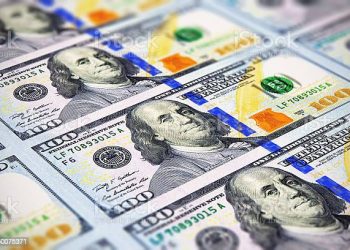U.S. oil futures soared to their highest levels in over a year on Thursday, driven by a substantial drop in crude oil inventories within the United States. This development added to growing concerns about tight global supplies resulting from the production cuts imposed by the OPEC+ alliance.
As of 0649 GMT, U.S. West Texas Intermediate crude futures (WTI) registered an impressive gain of 85 cents, reaching $94.53 per barrel. Earlier in the trading session, WTI briefly surpassed $95, marking the first time it had reached such heights since August 2022. Similarly, Brent crude futures climbed by 78 cents, or 0.8%, to $97.33 per barrel, reaching levels unseen since November.
Stefano Grasso, a senior portfolio manager at 8VantEdge in Singapore, commented on the situation, stating, “The oil market is quickly coming to terms with the fact that the OPEC+ cuts announced in the summer are having a deep effect on crude availability. Stocks are drawing while demand keeps growing. We are still far away from a price level causing demand destruction.”
Government data revealed that U.S. crude stocks experienced a substantial decline of 2.2 million barrels in the previous week, reducing inventories to 416.3 million barrels. This drawdown far exceeded the expectations of analysts surveyed by Reuters, who had anticipated a drop of 320,000 barrels. Additionally, crude stocks at the Cushing, Oklahoma, storage hub, which serves as the delivery point for U.S. crude futures, fell by 943,000 barrels during the week, reaching levels not seen since July 2022.
The decline in stockpiles at Cushing can be attributed to robust refining and export demand. However, these developments have raised concerns about the quality of the remaining oil at the hub and the possibility of it falling below minimum operating levels.
The reduction in crude stocks follows the production cuts of 1.3 million barrels per day announced by key oil-producing nations, including Saudi Arabia, as well as members of the Organization of the Petroleum Exporting Countries (OPEC) and Russia. These countries, collectively known as OPEC+, will convene on October 4 to assess market conditions and make decisions accordingly.
Regarding Saudi Arabia’s stance, Grasso added, “I think Saudi can accept much higher prices, but not much lower, and if cutting 10% production gives them a 30% price increase it makes sense to do.”
In a related development, President Vladimir Putin issued directives for his government to ensure the stabilization of retail fuel prices after a surge caused by increased exports. In response, the deputy prime minister mentioned proposals to restrict exports of oil products intended for domestic use, further intensifying concerns about market tightness.
However, analysts are mindful of potential factors that could temper the oil price rally. Sugandha Sachdeva, Executive Director and Chief Strategist at Acme Investment Advisors, pointed out, “Though oil prices are eyeing the $100 a barrel mark for Brent, the narrative of higher-for-longer interest rates in the U.S. might dampen enthusiasm and could put a lid on prices.”
As the global energy landscape continues to evolve, market participants will closely monitor developments within OPEC+, the trajectory of crude oil inventories, and the influence of broader economic factors on oil prices.











